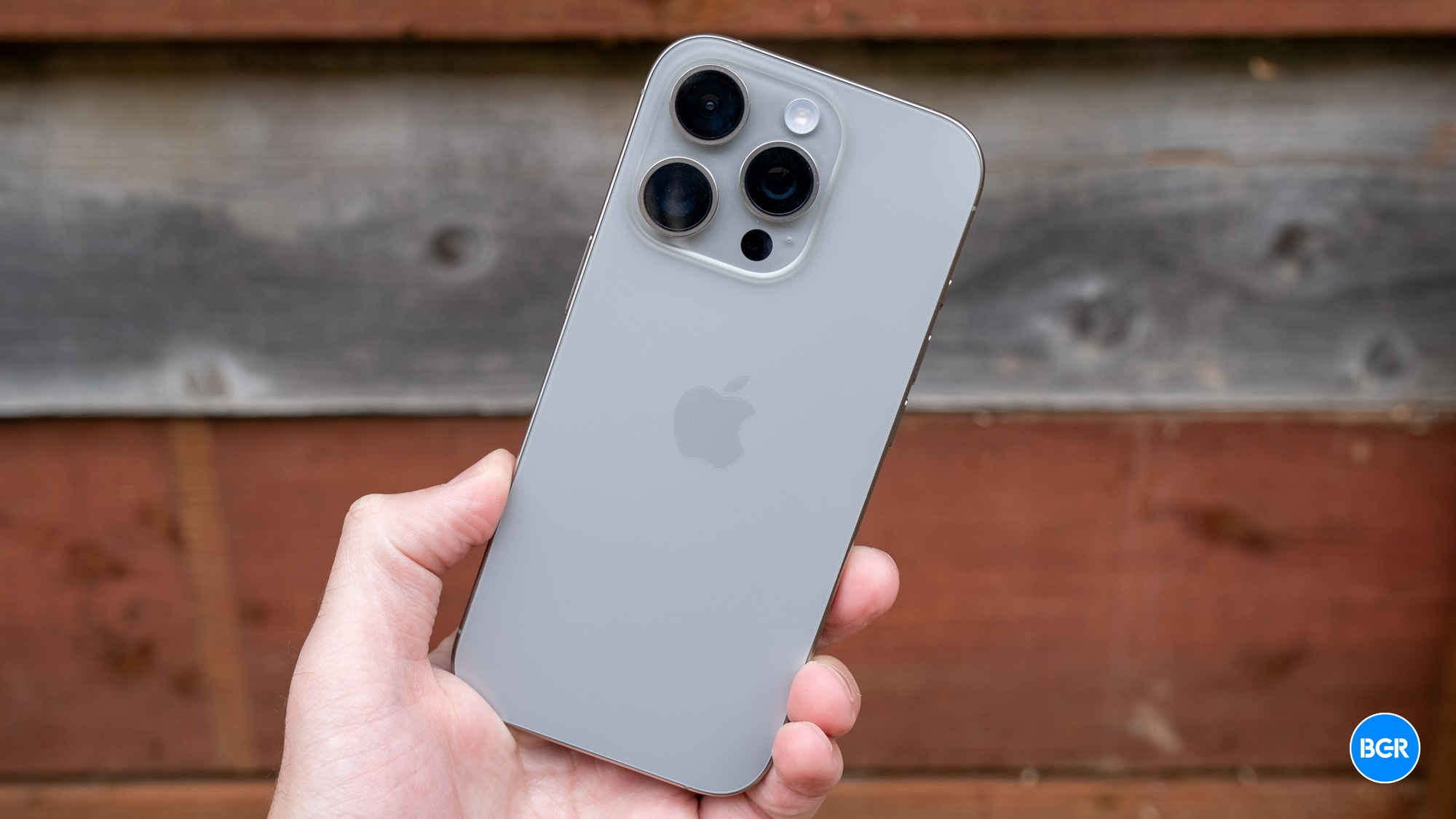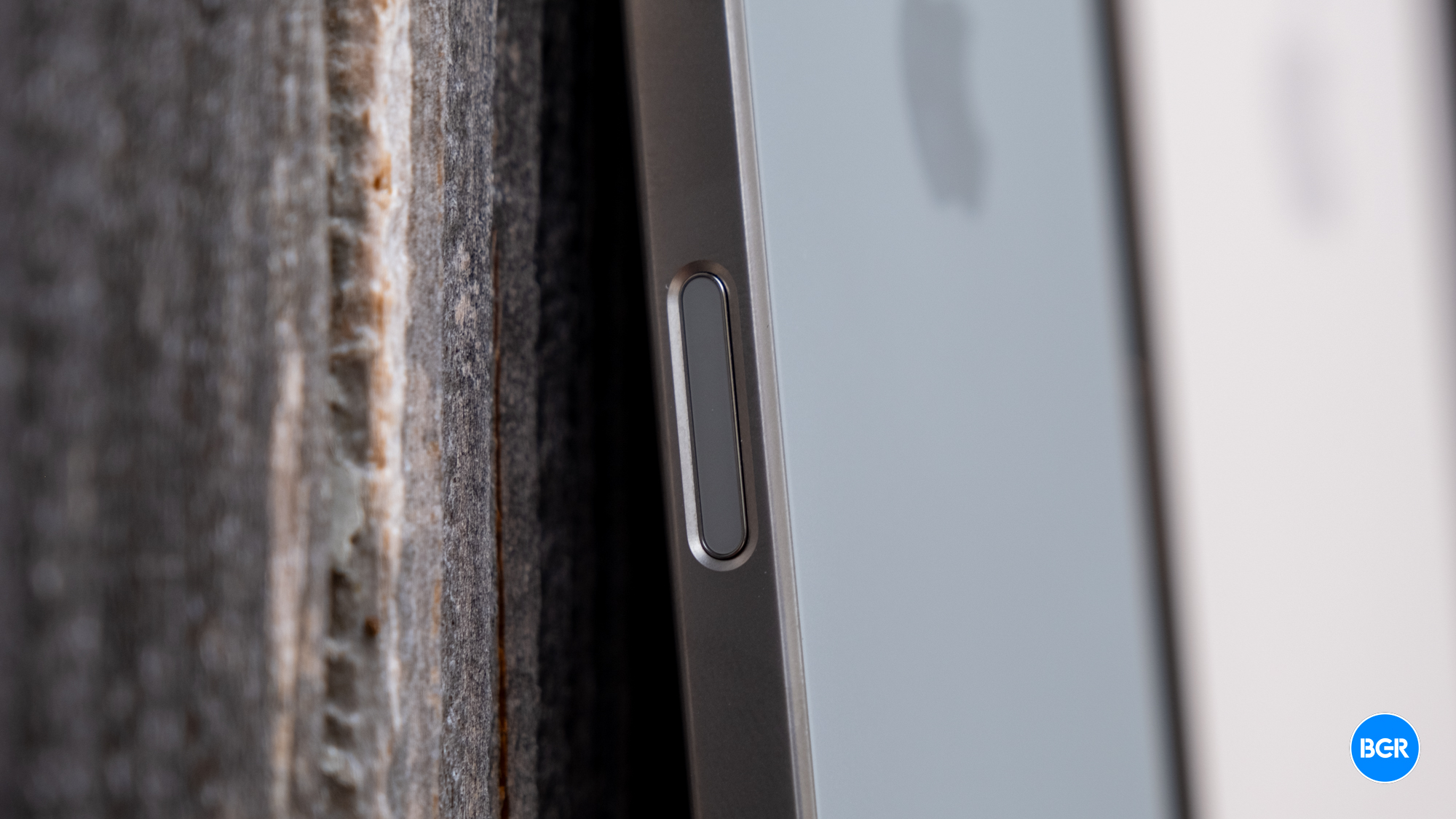iPhone 16 Pro
The iPhone 16 Pro and iPhone 16 Pro Max certainly bring improvements — but just how many, and is it worth the update?
Pros
- Same sleek design
- Camera Control is cool!
- Excellent-quality photos
- Top-tier performance
- Stunning screen
Cons
- Expensive
- Pro Max is huge
It’s a big year for Apple. The iPhone 16 and iPhone 16 Plus are massively improved, thanks to the addition of a series of new features and better performance. But the iPhone 16 Pro and iPhone 16 Pro Max get some updates too. For starters, they offer the highly publicized new Camera Control feature, along with an improved chip in the form of the A18 Pro and some design tweaks that help them feel even more premium.
Don’t miss BGR’s iPhone 16 review
But are those changes really enough? It seems as though in previous years, pro model iPhones have gotten bigger upgrades. That’s not to mention the fact that this year, the biggest iPhone feature of all is Apple Intelligence, and it’s a feature that isn’t available on the new iPhones at launch.
That’s not to say that the iPhone 16 Pro and iPhone 16 Pro Max are unimpressive devices. On the contrary, they’re stunning phones with some of the best performance and best cameras. But this year, it seems a little harder to justify the higher price of the Pro models over the far improved standard iPhone 16 and iPhone 16 Plus.
So who should buy the iPhone 16 Pro or iPhone 16 Pro Max? I set out to find out.
iPhone 16 Pro specs
| iPhone 16 Pro | iPhone 16 Pro Max | |
| Dimensions | 149.6 x 71.5 x 8.3 mm | 163 x 77.6 x 8.3 mm |
| IP rating | IP68 | IP68 |
| Display resolution | 1206 x 2622 pixels | 1320 x 2868 pixels |
| Display size | 6.3 inches | 6.9 inches |
| Display type | LTPO OLED | LTPO OLED |
| Display refresh rate | 1Hz-120Hz | 1Hz-120Hz |
| Display brightness | 2000 nits (peak) | 2000 nits (peak) |
| Chipset | Apple A18 Pro | Apple A18 Pro |
| Memory | 8GB | 8GB |
| Storage | 128GB, 256GB, 512GB, 1TB | 256GB, 512GB, 1TB |
| Rear cameras | Wide: 48MP, f/1.8, sensor-shift OIS Ultrawide: 48MP, f/2.2 Telephoto: 12MP periscope, f/2.8, 5x zoom | Wide: 48MP, f/1.8, sensor-shift OIS Ultrawide: 48MP, f/2.2 Telephoto: 12MP periscope, f/2.8, 5x zoom |
| Video | 4K at 120fps, 1080p at 240fps | 4K at 120fps, 1080p at 240fps |
| Front camera | 12MP, f/1.9 | 12MP, f/1.9 |
| Ports | USB-C 3.2 Gen 2 | USB-C 3.2 Gen 2 |
| Battery size | 3,582mAh | 4,685mAh |
| Charging | 45W wired, 4.5W reverse wired, 25W MagSafe, 15W Qi2 Wireless | 45W wired, 4.5W reverse wired, 25W MagSafe, 15W Qi2 Wireless |
| Connectivity | Bluetooth 5.3, Wi-Fi 7, 5G | Bluetooth 5.3, Wi-Fi 7, 5G |
| Colors | Black Titanium, White Titanium, Desert Titanium, Natural Titanium | Black Titanium, White Titanium, Desert Titanium, Natural Titanium |
| Price | $999.99 | $1,199.99 |
The same sleek design, with one extra button
The general design of the iPhone 16 Pro and iPhone 16 Pro Max remains unchanged from last year. That’s not a bad thing. These are some of the most premium-feeling phones out there, and last year, I really liked the switch to titanium for the frame. The devices feel solid and well-built, and the Desert Titanium iPhone 16 Pro Max that I have is absolutely stunning. I do wish Apple would stop being so stubborn about the colors on the Pro devices, though. I like the cool new colors of the standard iPhone 16 models, and I don’t see why so-called pro iPhones can’t have fun colors, too.

Apart from the Camera Control, which we’ll get into later, perhaps the biggest design change for this year comes in the form of the larger displays. Originally, it seemed that those larger displays came about through smaller bezels, but on the contrary, Apple has made the phones themselves bigger.
The result? While I used the iPhone 15 Pro Max for a year, the iPhone 16 Pro Max just feels a little too big. It’s entirely possible that I’d get used to it over a few weeks of testing it, but outside of using the iPhone 16 Pro Max for review, I’ll probably be sticking with the standard iPhone 16 Pro. It helps that, unlike in previous years, I don’t lose any features by doing so.
Everything else about the design of the phone is more or less what you would expect. You get the volume buttons and Action Button in the same spot on the left edge of the phone, along with the power button on the right edge. The USB-C port is on the bottom.
Camera Control
The Camera Control is the biggest change to design change for this year, and it’s a feature that I quite like. It’s very nerdy, which is uncharacteristic of Apple, but characteristic of Apple is the fact that it doesn’t have to be nerdy if you don’t want it to be. Most users who don’t want to tweak camera settings can simply press the Action Button to open the camera and press it again to take a photo.
Of course, it’s also much more advanced than that. You can lightly press the Camera Control to access settings like zoom, exposure, and more. It’s easy to do so, and I found it relatively easy to swipe, though perhaps not quite as easy as simply using the on-screen controls.

Apple’s hands seem a little tied when it comes to the positioning of the Camera Control, though. The feature is a little too high up the side when shooting horizontally, which means that you can’t really curve your finger around the edge to control it, instead having to hold the phone between your fingers and thumb. And it seems a little too low when shooting vertically. You have to bend your thumb in a way that you normally wouldn’t. You do get used to the positioning of it, though, including how to hold the phone when using it.
Perhaps the biggest issue of the Camera Control, however, is how hard you have to press it to actually take a photo. Now, this wouldn’t be that big of an issue if it didn’t result in the phone moving when you pressed the button, essentially reframing your shot. This is something that I got used to, and I was able to prevent it by holding my phone out more firmly. My theory is that this is the biggest learning curve associated with the Camera Control. Everyone knows how to press a button to take a photo. But on traditional cameras, this usually doesn’t result in the camera itself moving.
After getting used to all of this, I quite liked the Camera Control. I didn’t necessarily use its advanced features all that much, but it is cool to be able to physically press a button to take a photo. It feels kind of retro.
One of the best screens in the biz
The iPhone 16 Pro and iPhone 16 Pro Max still have among the best displays out there. The screens are a little larger this year, too. The display on the iPhone Pro measures 6.3 inches diagonally, while that on the iPhone 16 Pro Max is a massive 6.9 inches.

There’s nothing I don’t like about the screens on these phones. They have a high resolution, helping make text appear crisp and images detailed. And they get very bright, with up to 2,000 nits peak brightness. This makes it easy to see the screen even outdoors in direct sunlight. Unlike the standard iPhone 16 devices that still don’t have high refresh rates, the 16 Pro and 16 Pro Max have ProMotion, which allows them to range from 1Hz to 120Hz. That also enables the always-on display feature.
New for this year is the ability to range all the way down to 1 nit, which is handy for checking your phone at night, for example. Not that you should. Keep that phone away from your bed!
Top-tier performance, ready for AI
All four iPhone 16 devices have received all-new chips this year. In the iPhone 16 and iPhone 16 Plus, it comes in the form of the A18, but the Pro devices still get better performance thanks to the beefed-up A18 Pro. The A18 Pro essentially has an extra GPU core, which can help in certain situations like AI. All devices also have a new thermal design that Apple says helps improve cooling, further enhancing performance.
As expected, the iPhone 16 Pro and iPhone Pro Max perform stunningly well. They handle heavy multitasking with ease and load even heavier apps quickly. None of this is surprising. The iPhone has always performed better than any other phone out there. You’ll have no problems with the performance of the iPhone 16 Pro or iPhone 16 Pro Max. To be fair, I don’t think you’ll have any problems with the performance on the base model iPhone 16 devices either.

Here are the benchmark results we achieved with the iPhone 16 Pro. We tested both the iPhone 16 Pro and iPhone 16 Pro Max, and the results were very similar.
- GeekBench 6: 3,371 (single-core), 8,184 (multi-core)
- 3DMark Wild Life Extreme: 4,469
These are very good results and show a phone that is at the top of the game in performance. Qualcomm is catching up, but rest assured that the iPhone 16 Pro and iPhone 16 Pro Max will be able to handle everything you can throw at them.
A better battery and faster charging
Apple has improved the battery life on all four iPhone 16 devices, and indeed, the battery is quite a bit better. You still won’t be able to get two days of usage out of the phone, and I still recommend you charge your phone overnight. But you’ll likely find that you won’t have to worry about charging during the day, even on days that you use your phone more.
This could also come into play towards the end of the lifespan of these phones. After a year of using an iPhone 15 Pro Max, its battery capacity sat at 89%, which isn’t great, but if you have a longer battery life to begin with, any wear and tear on the battery over time will hopefully be less impactful. That said, I of course hope Apple works on fixing any issues related to battery health.

Even better is the fact that these phones charge much quicker. They support wired charging of up to 45W, which is a big improvement and puts them in the same region as the latest Samsung phones. They also support faster wireless charging, though.
For a while, it seemed as though MagSafe and Qi2 were essentially going to become the same thing, but Apple is preserving its MagSafe charging ecosystem by raising the maximum MagSafe charging speed to 25W (compared to Qi2’s 15W). You’ll have to get a MagSafe charger that supports these speeds, so don’t expect to be able to use your current MagSafe accessories to charge faster, but it is nice that you can get faster wireless charging.
Similar camera specs, new camera features

The main camera on the iPhone 16 Pro remains the same, but the smaller iPhone 16 Pro now has the same 5x telephoto camera as the iPhone 15 Pro Max from last year, and both devices get a new 48-megapixel ultrawide camera.
The cameras are capable of taking excellent photos. I’ll get into Photographic Styles a little later, but know that the cameras were able to capture great detail even in zoomed scenarios. They also captured great-looking images in low light, and while it was possible to push them to their limits through things like zooming in at night, for the most part, you should expect to get stunning photos out of the phones, in 99% of situations.
Photographic Styles
Of course, new for this year is the completely revamped Photographic Styles system, which is now accessible straight through the Camera app and can be toggled on a photo-by-photo basis. That basically means you can apply a different photographic style for each photo you take, depending on how you want the image to look. Not only that, but you get more control over Photographic Styles, with a little D-pad on the display that lets you tweak the colors. You can set a default photographic style that’s automatically applied whenever you open the app. However, you’ll have to do so through the Settings app, as each time you close the Camera app, the phone will revert back to its default setting.
I actually quite like this system. For all intents and purposes, many will find that Photographic Styles are akin to simply using a filter, but in reality, it’s a little different than that. Photographic Styles are part of the image processing pipeline when you take the actual photo. They’re actually towards the end of the pipeline, and that’s what allows users to change Photographic Styles after they capture a photo. So you can apply a style essentially as an edit in the Photos app.
It works well. Beyond the fact that it works well, it also allows users to get around Apple’s camera tuning if they don’t like how the colors look on their iPhones. It’s basically Apple’s way of not just taking on one major competitor, but taking them all on at once. Prefer the contrast-heavy look of the Google Pixel 9 Pro? You can get pretty close with the Photographic Styles. Maybe you like Samsung’s more refined approach? You can get pretty close to that too. No matter what your preference is, it’s worth playing around with Photographic Styles when you set up your phone.
Conclusions
It’s a weird year for the iPhone. The iPhone 16 and iPhone 16 Plus have gotten pretty impressive upgrades through features that were previously reserved for Pro model devices. The Pro models, on the other hand, keep those features and really only add one major change in the form of the camera control. Sure, there are other bits and pieces that are improved too, like the new A18 Pro chip. But given the fact that the iPhone series always performs excellently well, it’s hard for the improved performance to really feel like an upgrade.
The competition
If you’re considering the iPhone 16 Pro, it’s likely being compared to another new iPhone or the older iPhone you already have. Frankly, the iPhone 16 Pro represents a relatively minor upgrade over the iPhone 15 Pro from last year. If you have the iPhone 13 Pro or older, it’s worth upgrading, but others may want to consider waiting another year.
You also may be debating between the iPhone 16 Pro and the base iPhone 16. The two phones are closer than they’ve been in years, as you can read about in BGR’s iPhone 16 review. You should buy the iPhone 16 Pro if you want a high refresh rate display with Always On Display mode, the best performance you can get in an iPhone, and that telephoto camera.
That said, consider the fact that the base iPhone 16 still performs very well and has a great camera with access to Photographic Styles. It also still has the new Camera Control button, which is this year’s most significant hardware design change.
Should I buy the iPhone 16 Pro?
Yes. Despite being a relatively lackluster upgrade compared to last year’s Pro model, it’s an excellent smartphone.


















